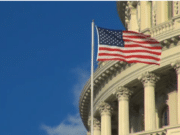Federal Reserve predicts 24,290% from here
The Federal Government just began the nationwide rollout of a strange new technology…
The White House, Federal Reserve and Treasury Dept. are directly involved… as...
AI Energy Breakthrough Will Be the Biggest Story of the Decade
In a major victory for all mankind…
Artificial intelligence has created a clean and limitless new form of energy — called "AI energy."
Insiders are hailing...
Congress Just Fast-tracked New A.I. Energy Breakthrough
On July 27, 2023, in an unprecedented, overwhelming bipartisan move, Washington fast-tracked the ADVANCE Act … a radical new energy bill that paves the way...
The Big E.S.G. Die Up Is Coming
In the electrifying world of modern finance, where digital screens flicker with the pulse of global markets, a new protagonist has emerged on the...
America’s Second Coming: How Coal Could Drive the Future of Energy
In the heart of the 19th century, Henry Decker, a young and ambitious man, ventured into the rugged terrains of Appalachia. Unlike many of...




